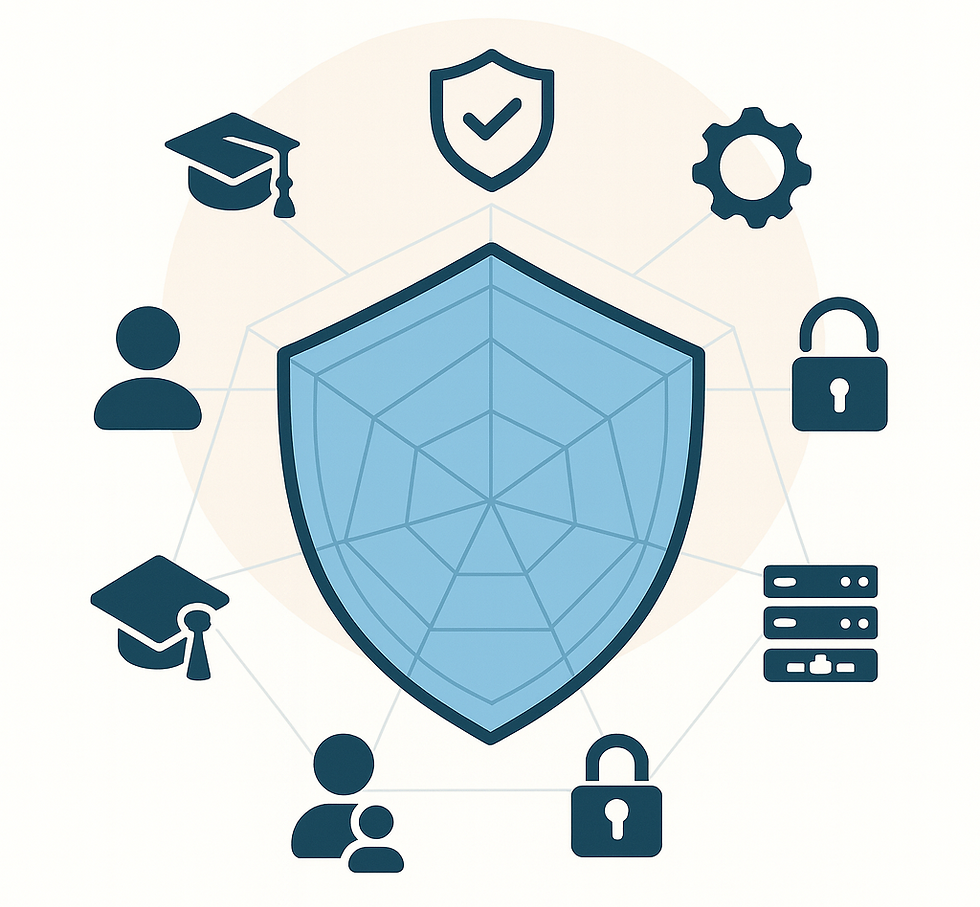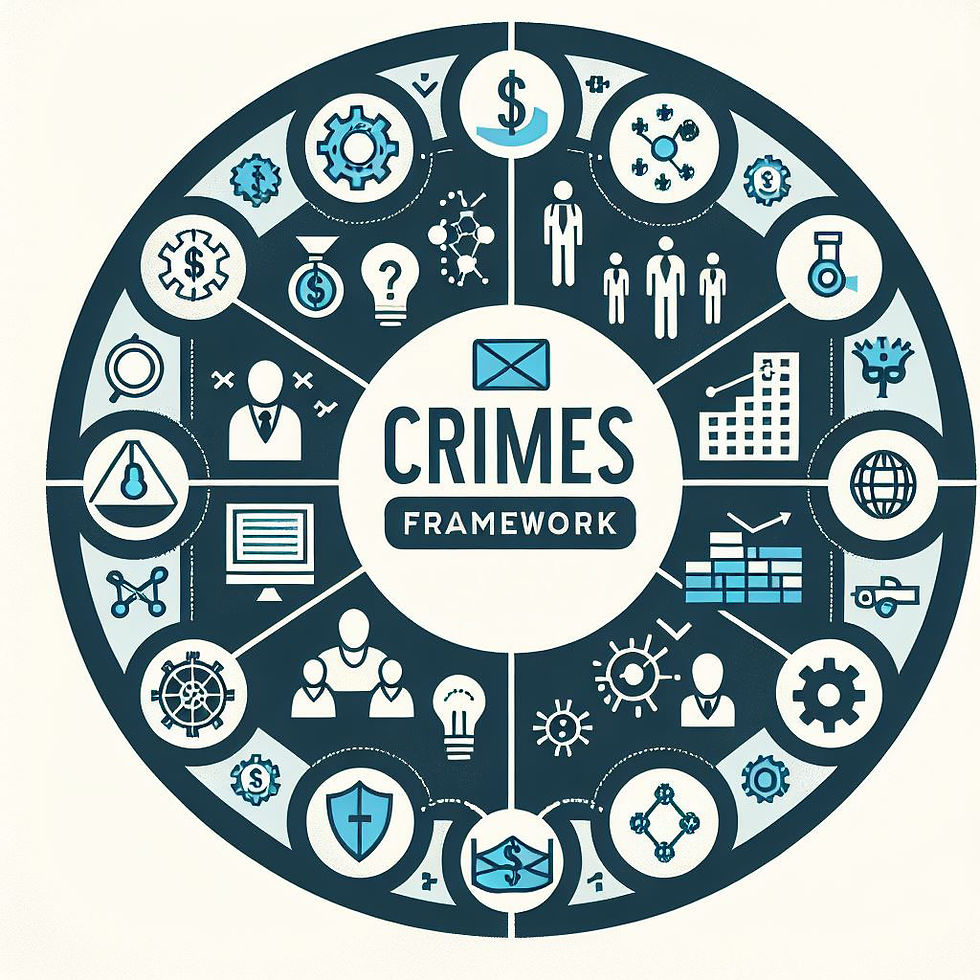A Practical Framework for Risk-Based Procurement of GxP Software and Technology Services
- Frederic Landry

- Aug 11, 2025
- 4 min read

Selecting the right software or technology partner in a regulated GxP environment isn't just about features and cost—it’s about trust, compliance, and risk management. Having worked extensively across the Life Sciences sector, including pharmaceuticals, biotechnology, medical devices, diagnostics, and clinical research organizations, I’ve seen firsthand how inadequate supplier selection and oversight can expose organizations to significant risks. These risks span compliance failures, data integrity breaches, operational disruptions, and costly remediation activities. In regulated environments where patient safety, product quality, and data integrity are paramount, making informed and risk-based decisions when selecting technology partners is not just best practice, it’s essential for maintaining trust with regulators and ensuring business continuity.
However, achieving this is not straightforward. The requirements for audits and regulatory expectations are often fragmented across a patchwork of best practices, guidelines, and evolving regulations. Rarely are they presented as a single, unified framework. Building a coherent and comprehensive approach requires careful analysis, cross-referencing, and a deep understanding of both regulatory expectations and business realities. It’s a complex task that demands not just expertise, but strategic thinking to transform fragmented requirements into a clear, defensible, and fit-for-purpose methodology.
This is why a structured, risk-based methodology is vital when evaluating potential technology partners. The approach described below offers a practical, scalable solution to ensure decisions are informed, defensible, and aligned with regulatory expectations. It is broken down into three core assessments allowing you to determine, in turn, the Supplier Quality Level (SQL), the Baseline System Risk (BSR) and the GxP System Risk Level (SRL).
1. Supplier Quality Level (SQL) Assessment
The first step is to assess the operational maturity and quality culture of the supplier. This involves a structured evaluation across eight critical areas:
Quality Assurance Governance - Assesses the robustness of the supplier’s quality management framework, including oversight structures, policies, procedures, and how quality objectives are monitored and enforced across the organization.
Software Development Lifecycle (SDLC) - Evaluates the maturity of processes and controls used to design, develop, test, and maintain software, ensuring alignment with GxP requirements and industry best practices throughout the lifecycle.
Change & Configuration Management - Focuses on the controls in place for managing changes to software, systems, and documentation, ensuring traceability, proper evaluation of impact, and mitigation of unintended risks.
System Lifecycle Management & Release Control - Reviews how systems are managed from implementation through retirement, including procedures for versioning, release approvals, and maintaining validated states throughout the lifecycle.
Infrastructure, Security & Data Integrity - Examines the supplier’s infrastructure controls, cybersecurity measures, and practices to protect data integrity, confidentiality, and availability, in line with GxP and regulatory expectations.
Incident, Deviation, CAPA & Problem Management - Assesses how the supplier identifies, investigates, and resolves quality incidents, deviations, and systemic issues, including their approach to corrective and preventive actions (CAPA).
Supplier & Subcontractor Oversight- Evaluates the governance and controls in place for managing third-party relationships, including qualification, monitoring, and risk management of critical suppliers and subcontractors.
Training & Competency - Reviews how the supplier ensures personnel are properly trained, competent, and qualified for their roles, with ongoing assessments to maintain skills relevant to quality and compliance.
By scoring these areas, organizations can gauge a vendor’s ability to consistently meet GxP expectations. This evaluation informs whether a supplier can be trusted with systems supporting regulated processes, data integrity, and patient safety.
2. Baseline System Risk (BSR) Determination
Understanding the intrinsic risk profile of the system under consideration is crucial. This includes evaluating:
Intended Use & Applicable Regulations - What role does the system play in GxP processes? What regulations apply?
GxP Relevance & Impact on:
Data Integrity - Ensuring data is complete, accurate, consistent, and protected throughout its lifecycle.
Patient Safety - Protecting patients from harm by ensuring systems support safe, reliable, and compliant processes and outputs.
Product Quality - Maintaining the required standards of a product to ensure it meets regulatory and customer expectations for safety and efficacy.
System Complexity - How complex is the system in terms of configuration, data flows, integration? Is this a “one-off” highly customized system, or is it commercially available without any configuration capabilities that could impact your ability to validate it for GxP use?
This structured risk analysis ensures organizations appreciate the specific compliance exposure and business criticality of the system under consideration.
3. GxP System Risk Level (SRL) Determination
With both the supplier maturity (SQL) and the system-specific risk (BSR) understood, we can determine the overall System Risk Level (SRL) to the GxP organization. The SRL is a practical, risk-based tool that guides organizations in determining the appropriate level of validation and oversight for GxP systems. By combining the Supplier Quality Level (SQL) and the Baseline System Risk (BSR), the SRL provides a clear rationale for scaling validation efforts according to actual risk.
Applying SRL to Validation Strategy
High-Risk Systems - Require robust validation activities, including comprehensive testing, detailed documentation, and enhanced supplier oversight to mitigate potential compliance and operational risks.
Lower-Risk Systems - Allow for a streamlined, proportionate approach, focusing resources on areas of greatest impact while avoiding unnecessary effort. Can justify applying a lighten validation strategy to GxP systems.
Key Benefits
Aligns validation rigor with overall system risk, which incorporates supplier considerations, not just system functionalities at a single point in time.
Supports defensible, risk-based decisions for scaling test activities up, or down.
Optimizes resources by preventing over- or under-engineering.
Strengthens readiness for audits and inspections.
In short, SRL ensures validation activities are efficient, targeted, and aligned with both compliance and business needs.
Additional Considerations for Regulatory Compliance
Systems subject to specialized regulatory scrutiny—such as those falling under 21 CFR Part 11 for electronic records and signatures—may require supplemental verifications beyond this core framework. These should be tailored to the nature of the system and the regulatory expectations specific to your business operations.
Alignment with Industry Best Practices
This methodology draws from recognized best practices and regulatory guidance, particularly the principles outlined in GAMP 5. It emphasizes a risk-based, scalable approach, aligning with global expectations for validation and supplier management in the life sciences sector.
To conclude, effective procurement of software and technology services in the GxP space demands more than intuition—it requires structured assessment, clear criteria, and alignment with regulatory standards. Our SQL, BSR, and SRL framework provides a defensible, transparent path to achieving this. By applying this methodology, organizations can confidently navigate the complexities of supplier selection, validation, and regulatory compliance—ensuring they safeguard data integrity, product quality, and ultimately, patient safety.



Comments